|
You know how some animals have been given a name that makes them sound just awful? Like the gila monster (a lizard), or the hellbender (a salamander), or maybe the blobfish? It doesn't seem fair to the animal, does it? Well, today's awesome animal, the poison dart frog, is another creature with an undeserved negative name. But in spite of the name, they are arguably the most beautiful frogs in the world. So, what the heck is a Poison Dart Frog? Poison dart frogs are small but spectacular frogs in the family, Dendrobatidae. There are about 300 species living in Central America and South America. Yes, some of these frogs really are poisonous, and yes, native peoples use their poisons on the tips of their hunting blow darts (or at least they used to). Nevertheless, is it fair to name the entire group poison dart frogs? Out of about 300 species, only three of them are known to have been used for such a purpose. Many of the species aren't toxic at all or are only mildy toxic. The first poison dart frog I had a chance to see in the wild was when Trish and I were in Costa Rica in 2016. We had arrived at a nice ecolodge, and we were sitting on the patio, which was surrounded by gardens. I noticed a tiny green and black frog hopping through the vegetation nearby. It turned out to be this frog (which happens to actually be called the green and black poison dart frog): Amazing facts about Poison Dart Frogs Some poison dart frogs really are poisonous, but they are not venomous. Let's clear up a few important points. There are literally millions of animals that produce toxic chemicals. But that doesn't mean they're poisonous. By definition, in order to be poisonous, an animal must be toxic to eat. Poison dart frogs store toxins in glands beneath their skin. So if you eat one that is highly poisonous, you may be in serious trouble. For an animal to be venomous, it must have the ability to inject a toxic substance with fangs, a stinger, barbs, spurs, or something similar. Rattlesnakes and honeybees are venomous. Poison dart frogs do not bite and do not inject venom, so they are not venomous. They are poisonous. How poisonous are they? Well, most of them aren't particularly dangerous to humans. As I said above, only three types have been used for making poison hunting darts. But the most toxic of these, the golden poison frog, is one of the most toxic creatures on Earth. The poison from one individual is enough to kill 20,000 mice. Wow! How many humans would that be? Here's a golden poison frog: Poison dart frogs do not produce their poisons. Huh? It's true. Instead of producing the poisons in their own bodies, these frogs get the substances from the food they eat. They specialize on eating certain ants, beetles, mites, and millipedes that contain these toxins. This is why poison dart frogs that are raised in captivity have minimal levels of toxins. They don't have access to their natural, toxin-heavy food source. These frogs give their babies a toxin boost at a very young age. Recent studies have shown that mother frogs lay a number of unfertilized eggs, which happen to be laced with toxin. They feed these eggs to their young tadpoles, thus giving their babies a nice toxin boost to get them started. Isn't that sweet? Studies have shown that the brighter the frog is, the more toxic its poison is. Scientists actually used a spectrophotometer to measure the frogs' color. Those that were brighter and more conspicuous were more toxic. Below is the other poison dart frog we saw in Costa Rica, the strawberry poison dart frog: Okay, here's a question you may be wondering about. Since these frogs get their toxins by eating toxic prey (ants, mites, etc.), why aren't they poisoning themselves when they do this? As it turns out, it is a fairly simple mutation that makes them immune to the poison. If you want a more detailed explanation of this, check out this video. The way that natives used the frogs to get the poison onto their darts was rather gruesome. A study of the Emberá Indians of Columbia described the process. These people would catch a number of the frogs and place them in a hollow cane. When preparing darts, they would pull out a frog and "pass a pointed piece of wood down his throat, and out at one of his legs." Obviously, this would seriously agitate the frog, causing it to "sweat" out the poison on its back. They would then dip their arrows in the poison, and these arrows would remain effective for up to a year. Poison dart frogs evolved their extremely bright colors as a way to warn predators not to eat them. This is called Aposematism (a fancy word for "warning coloration"), and it is common in many different poisonous and venomous animals. The coral snake is a venomous example, and the monarch butterfly is a poisonous example. The bright black and white pattern of a skunk is another example, but skunks have a very different threat for predators to avoid. One more poison dart frog example, the blue poison dart frog: So, the Poison Dart Frog deserves a place in the B.T.C.A.H.O.F. (Beyond The Call Animal Hall of Fame). FUN FACT: The phrase beyond the call is a reduction of "above and beyond the call of duty," which probably originated in the American armed forces during World War I. In 1916, the services created a series of medals to honor acts of courage. The Medal of Honor would only be awarded for actions “above and beyond the call of duty." More recently, the phrase has become a way to describe almost anything that is excellent or well done. There are actually two shortened versions: "beyond the call" and "above and beyond." So, beyond the call is another way to say awesome! Photo Credits:
Green and Black Poison Dart Frog - Stan C. Smith Golden Poison Frog - Wikimedia Commons Strawberry Poison Dart Frog - Stan C. Smith Native with Blowgun - Wikimedia Commons Blue Poison Dart Frog - National Aquarium
1 Comment
This week's Awesome Animal is one that plays an important role in my upcoming novel, Bridgers 4! The animal is the PILLBUG. Well, it isn't really pillbugs that show up in the book. It's actually... well, you're just going to have to read the book when it comes out in late November. You see, pillbugs are near and dear to my heart. Why? Well, back when I was teaching biology to 7th graders (kids 12 to 13 years old), I did a major research and creative-writing project that involved pillbugs. More on that below. But other than that, pillbugs are just awesome! I may need to explain that the name, Pillbug, may not be known to everyone everywhere. Around here, many people call them roly polies. They are also called woodlice, isopods, armadillo bugs, potato bugs, doodle bugs, and my favorite, chuggypigs. I would be interested to know what people call them where you live... please reply and let me know. So, what the heck is a Pillbug? A pillbug is not really a bug. It's not an insect. It's actually a crustacean. You know what crustaceans are, right? Crustaceans include lobsters, crabs, shrimp, crayfish, krill, barnacles, and many others. Pillbugs are unusual for crustaceans in that they are terrestrial (they live on land instead of in water). Pillbugs are in an order of crustaceans called isopods. This also includes sowbugs, which are similar to pillbugs. But pillbugs have a superpower that sowbugs don't--the ability to roll into a ball, which is how they got the name pillbug. Amazing facts about Pillbugs As mentioned above, pillbugs have the ability to roll into a tight ball. There is actually a name for this. To roll into a ball is to conglobate. The obvious benefit of conglobation is protection from predators. But some biologists believe it is even more important as a way to avoid dehydration. Pillbugs are about the only crustaceans that live on land, and they are not as well adapted to dry land as insects. They do not have the waterproof waxy coating that insects have. They use gill-like structures to breath, and therefore they have to spend their time in moist areas under rocks and logs, and if you put them in a dry environment, they will roll into a ball to keep from drying out. Here is a conglobating pillbug: Pillbugs can drink through their anus. Actually, they can and do suck up water through their mouth parts, like we do. But remember, they are very sensitive to drying out, so they also have the ability to take in water through special tubes at their rear end, called uropods. Okay, weird. Pillbugs do not pee. That's right. They do not need to urinate. Most animals cannot tolerate ammonia, which happens to be present in the wastes that are created inside our bodies. Most animals convert these wastes into urea and then squirt that out of their bodies. That's urine. But pillbugs have an amazing tolerance for ammonia gas, and they can just excrete it directly out through their exoskeleton. Wow, it would be nice to not have to pee. I could sleep through the whole night! Pillbugs molt in two sections. As crustaceans, pillbugs are included in the larger group, Arthropods (which also includes insects, spiders, and more). Arthropods have exoskeletons, and almost all of them grow larger by periodically molting their exoskeleton (which doesn't grow once it hardens). Beneath the shed exoskeleton is a new, soft exoskeleton, which immediately grows larger before it hardens up. Pillbugs are different in that they first shed the exoskeleton on their back half. Then a few days later they shed the front half. Check out this cool video of pillbugs molting. Pillbugs walk around on seven pairs of legs. Strangely, though, when baby pillbugs hatch, they only have six pairs of legs. They don't get the seventh pair until after they molt for the first time. Pillbugs eat decaying matter on the forest floor and under rocks and logs. They also eat their own poop. That's right. It's a real thing among may animals, and it is called coprophagy. Other animals do it for different reasons, but pillbugs do it to conserve copper. Pillbugs need copper in their bodies, and they lose some of it every time they poop. So they have a habit of eating their poop to conserve the copper. Female pillbugs carry their babies around on their underneath side. The eggs are layed and then transferred to the marsupium (similar in function to a marsupial's pouch). The eggs hatch in the marsupium, and then the young hang on to the mother's underside for eight to twelve weeks as they develop. Okay, so I have to talk a bit about the The Pillbug Project (the actual title of a project I did with my 7th graders back in my teaching days). We formed a partnership with a dozen or so other schools in North America. The students in each partner class went out and collected pillbugs in their area. We then carried out a series of experiments with the pillbugs to see how well adapted they were to the climate in their area of the continent. These were simple choice experiments. For example, put the pillbugs in a container that is dry on one side and moist on the other side. After a specific amount of time, count how many are on each side. We did the same thing with warm and cool sides, light and dark sides, etc. Not surprisingly, we found that the ones from warm, dry areas of the continent were more comfortable on the dry side and on the warm side. Those from cooler, wetter regions were more comfortable on the cool side and wet side. And so on. There were many more experiments involved, but you get the idea. We also worked collaboratively with the students at the other schools to write a fun book about an intelligent pillbug from the future that travels back in time to teach a pair of teens about the history of life on Earth. This pillbug, named Armadillia, had a nifty little time machine attached to a belt around his waist. Below is a drawing one of my students created, his vision of what this fictional character should look like. So, the Pillbug deserves a place in the F.A.H.O.F. (Fetch Animal Hall of Fame). FUN FACT: The word fetch in this usage is, I suppose, a reduction of fetching, which means "attractive." Okay, I must admit, using the word fetch in this context isn't really a thing. It comes from the 2004 movie, Mean Girls, in which Gretchen tries to make fetch a thing but gets shut down by her friend, Regina George. Here's the clip. In spite of Gretchen's efforts, in the 14 years since the movie came out, fetch still isn't catching on. But Regina's response ("Stop trying to make Fetch happen!)" has now become a way to mock people who are out of touch. So... for Gretchen's sake, I'm going to say that fetch is another way to say awesome! Photo Credits:
Pillbug #1 - on finger - Backyard Nature Pillbug rolled up - James Castner, University of Florida. Pillbug Shedding - Backyard Nature Pillbug Babies - The Living Classroom Trish and I recently flew down to Texas to spend a bit of time with the family of one of our daughters in El Campo (southeast of Houston). They have a small farm there, and I had the opportunity to help with a few tasks. I did not grow up on a farm, and I have little farm experience, but I was recruited to help with moving a sun shelter (for pigs) from one field to another. I can honestly say this was the first time I have wallowed in pig mud. I now understand why pigs enjoy it. While Trish and I were on a walk on the outskirts of El Campo, we saw an impressive bird for the first time, the Caracara. Here's a bit of interesting background on the caracara. This bird is also known as the Mexican eagle, but it actually isn't an eagle at all, it is a relative of the falcons, and it likes eating roadkill more than hunting. The bird used to have the honor of being the national bird of Mexico. But it was downgraded not too long ago. Why? Because the Mexican state department took a closer look at the bird on the national seal and decided it was a golden eagle, not a caracara. The bird on the national seal goes back to native Aztec legend. According to the legend, the sun god, named Huitzilopochtli, asked the people to find an eagle perching on a cactus and eating a snake, and that's the spot where they should build their new town. The town was called Tenochtitlan but later became known as Mexico City. At some point, someone decided the bird was a caracara. The problem, though, is that the caracara wasn't common in that area, and it didn't look much like the bird on the seal. But the golden eagle is common there and does look like the bird on the seal! Anyway, the caracara isn't my chosen Awesome Animal for this week (that's the Pillbug), but I thought I would share this tidbits. Photo Credits:
Wallowing in mud - Trish Smith Crested Caracara - Bay City Tribune In honor of the upcoming re-release of Diffusion, today's awesome animal is the Tree Kangaroo. Way back in 2016, I briefly described these creatures in one of my newsletters, but now it's time to give them the full treatment. After all, tree kangaroos are perhaps the most iconic creature of the Diffusion series. I take a toy tree kangaroo to book signings, and one is included on the copyright page of the new versions of the Diffusion books: It is high time I expound upon this creature’s awesomeness. Yes, tree kangaroos are real! They live on the island of New Guinea, but also in very northern Australia and some of the Indonesian islands. Why are tree kangaroos so cool? Well, because they’re kangaroos—that live in trees! When Australian Aborigines and Papuan (New Guinea) natives told early European explorers about tree kangaroos, the explorers refused to believe the stories. You have to admit it seems pretty unlikely, right? So what the heck is a Tree Kangaroo?? Tree kangaroos are marsupials, in the genus Dendrolagus. There are about 14 different species, but this is one of very few types of large mammals with species still being discovered. Most tree kangaroos are about the size of a housecat. They are a fascinating example of divergent evolution (when groups of similar creatures become isolated and gradually diverge in form and function). Long ago, groups of ground-dwelling kangaroos became isolated in areas of dense tropical forest, as opposed to the open grasslands more typical for kangaroos. Once isolated in rainforest areas, they developed the ability to climb trees. Amazing facts about Tree Kangaroos These creatures eat, sleep, and breed in the treetops, but that doesn’t mean they live a comfortable existence. First of all, I imagine breeding in the treetops requires some caution (yikes!). Second, they seem to be a tasty meal for their primary predator, the amethystine python (which has a habit of hugging much too tightly). Third, natives hunt them for food (In New Guinea, "the man who has successfully hunted a tree-kangaroo has greatness bestowed upon him. He has conquered the largest, most prestigious and human-like marsupial known to his people." [Tim Flannery, from the awesome book, Throwim Way Leg]). And fourth, they depend on pristine rainforest, and if you haven’t heard, rainforests are getting smaller every day (a real bummer). Tree kangaroos are reclusive. Some are extremely rare and live in places so remote that they are unusually tame, as they have never learned to fear humans. Just a few days ago, National Geographic published an article about the Wondowoi Tree Kangaroo, a species that had not been spotted since 1929 (ninety years ago!). It was thought to be extinct, until an amatuer botonist led an expedition into the nearly-impenetrable bamboo forests of the Wondiwoi Mountains of West Papua to find it. After much searching, he took the first ever photographs of this species: The Papuan people of New Guinea have numerous ancient myths about tree kangaroos, some of which play a role in the Diffusion novels. For example, one of the main characters of the novels is a tree kangaroo named Mbaiso (at least it looks like a tree kangaroo... all is not what it seems in Diffusion). The name comes from a rare tree kangaroo, Dingiso mbaiso, which is revered by the local Moni people as an ancestor. When describing encounters with these animals, the tribesmen hunters say the creatures sit up, whistle, and hold up their paws in greeting. So the Moni believe the creatures are ancestor spirits who recognize them. Another interesting story, this one about the Matschie’s Tree Kangaroo, is that the creature has a special power. If you think of the girl you love before you let your arrow fly to shoot this tree kangaroo, at the moment the arrow pierces the animal’s body, that’s when the girl will fall in love with you. Below is the Matschie's tree kangaroo: Tree kangaroos really are adapted to life in the trees. Compared to ground kangaroos, they have longer, curved nails for gripping the bark. Their hind feet are longer, and they have spongy, padded grips on their palms and the soles of their feet. Perhaps most striking is their tail. It is longer and heavier than those of ground kangaroos, which gives them better balance as they climb. When they climb straight up a tree trunk, they wrap their forearms around the tree and use their powerful hind legs to "hop" up the tree. They are terrific jumpers. They can leap from one branch to another that is thirty feet (9m) below them. And, this may be hard to believe, but they can leap to the ground from as high as sixty feet (19m) without getting hurt! Considering adults can weigh 25 to 30 pounds (11 to 14kg), this is amazing! Check out this fun Animalogic video about Tree Kangaroos. As mentioned above, tree kangaroos are marsupials. And you know what that means, right? It means they give birth to their babies very early, and then the babies develop in an external pouch. The babies are only the size of jellybeans at birth. At that point, about the only parts of their external anatomy that are well developed are their hands and mouth. They use their hands to crawl to the pouch, then they attach their mouth to a nipple and hang on. For a long time. Astoundingly, baby tree kangaroos stay in the mother's pouch for up to 275 days. And then, after they come out, they are not weaned for up to another 240 days! One more little tidbit. You may have noticed that tree kangaroos look quite a bit like teddy bears. To illustrate how true this is, recently a photo emerged on the internet. It was taken at the Perth Zoo, of a mother Goodfellow's tree kangaroo with a baby in her pouch (the first tree kangaroo baby born at the zoo in 36 years). The creatures looked so cute and teddy-bear-like that many people thought the photo was a fake, just a photo of a stuffed toy. But, of course, the photo was indeed real: So, the Tree Kangaroo deserves a place in the L.A.H.O.F. (Legit Animal Hall of Fame). FUN FACT: The word legit is, of course, a reduction of legitimate, which means "conforming to the law or to the rules." The earliest citation for use of the shorter version, legit, is from 1897. But in recent years it has been used as a slang word to mean that something is either credible or that it is cool. I think this word is appropriate for tree kangaroos because some people are surprised that these creatures are even real. AND, because these creatures are definitely cool! So, legit is another way to say awesome! Photo Credits:
250-million-year-old bacterium - Bioprocess Online Goodfellows Tree Kangaroo #1 - Currumbin Wildlife Sanctuary Wondowoi Tree Kangaroo - Michael Smith (National Geographic) Matschie's Tree kangaroo- San Diego Zoo Baby Goodfellow's Tree Kangaroo in pouch - ZooBorns Goodfellow's Kangaroo and baby - Perth Zoo |
Stan's Cogitations
Everyone needs a creative outlet. That's why I write. Archives
July 2024
|

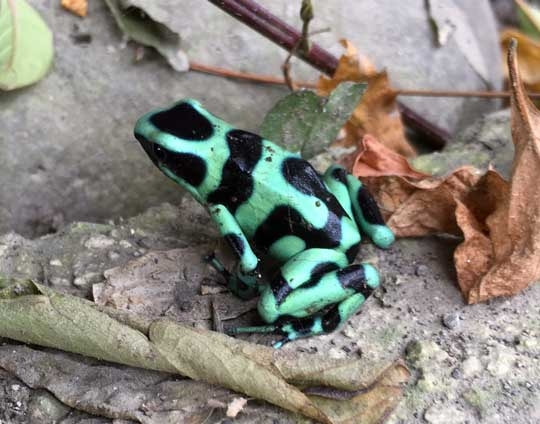
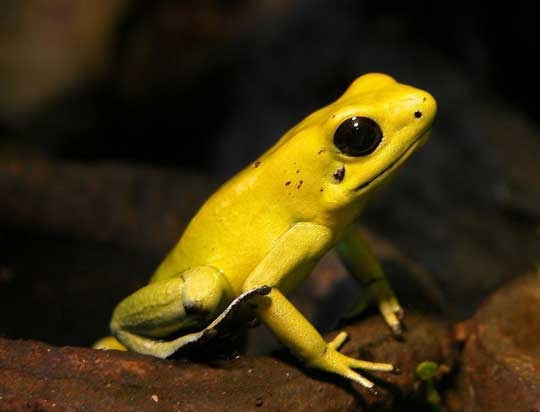


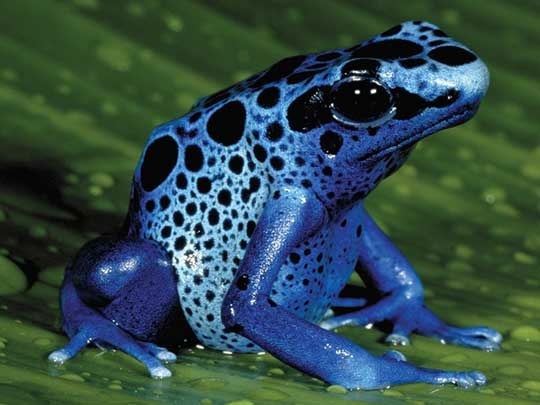



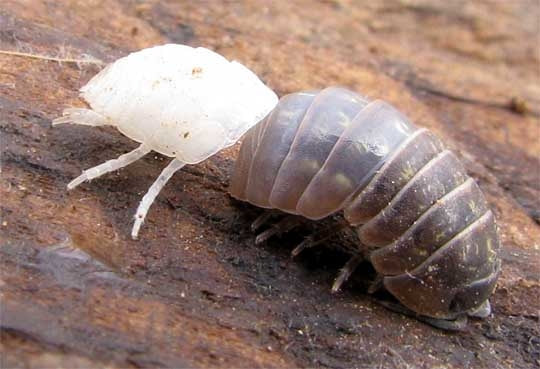
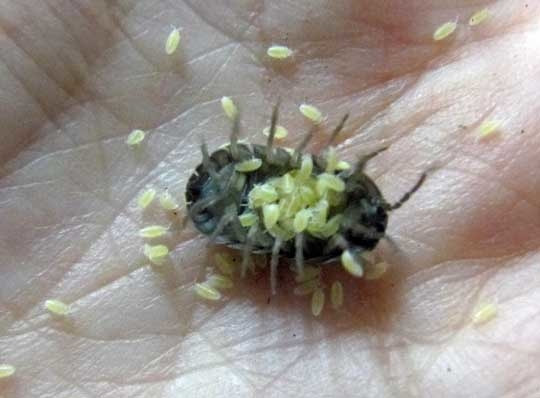

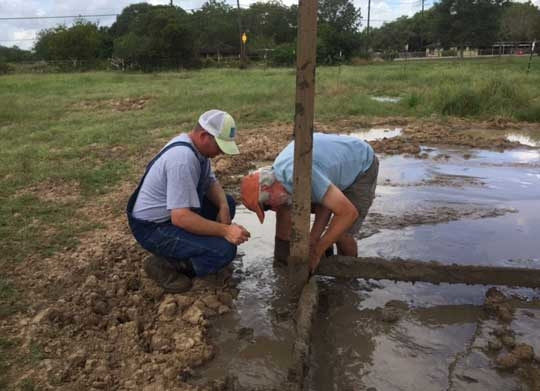
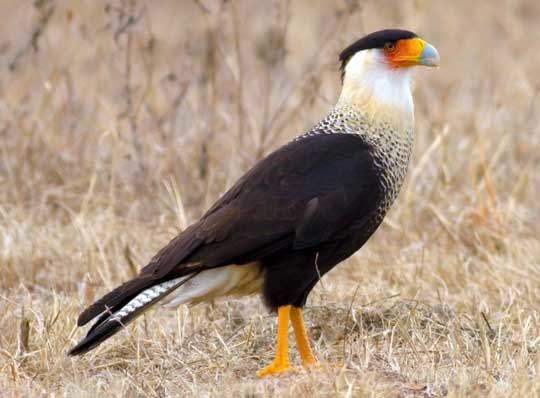


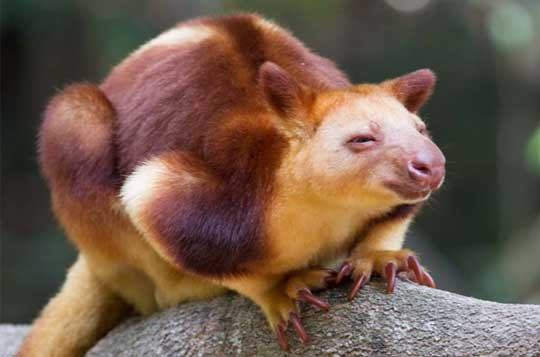




 RSS Feed
RSS Feed